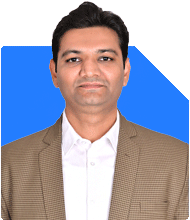
Hi expert,
I need your input with regards to my EPF.
I have worked for 3 companies. The last company I worked for from 2014 to 2018 (approx 3.8 years). Since 2018 I am into business so I haven't contributed to my EPF.
Now I plan to withdraw my EPF as its been over 6 years I haven't contributed. A few quick questions
- Is the total amount taxable?
- In total I have 5.1 years of experience but when I am withdrawing online its just taking into consideration my last job experience (3.8 years). Under reason for leaving its showing "CESSATION (SHORT SERVICE) - Any other reason"
Under service history its showing the entire experience of 3 companies and a total of 5.1 years.
I am just worried as I don't want to commit any error while withdrawing. We checked with EPF office and he mentioned that if in the service history its showing then you don't need to worry and all your experience will be taken. But when I am withdrawing its showing the current experience and also on reason for leaving showing short service which is worrying since it would be taxed (under 5 years)
Kindly suggest how do I go about this and what forms I need to fill / select in order for it to be a smooth and error free transaction.
Kindly respond at the earliest as this very important for me.
Ans: Firstly, let me appreciate your diligence in seeking clarity about your Employee Provident Fund (EPF) withdrawal. This shows your commitment to managing your finances wisely, which is commendable. Let's dive into your concerns and provide a detailed guide to ensure a smooth and error-free EPF withdrawal process.
Tax Implications of EPF Withdrawal
Withdrawing EPF after a period of non-contribution raises valid concerns about tax implications. Here's what you need to know:
Tax-Free Withdrawal Conditions: If the total period of your service is five years or more, the EPF withdrawal amount is tax-free. This is crucial for you, as your total service across three companies sums up to 5.1 years. Hence, you meet the criterion for tax-free withdrawal.
Taxable Withdrawal: If the service period is less than five years, the withdrawal is taxable. Given that your service history includes over five years, you should not face this issue. However, the concern arises from the online system only recognizing your last employment period of 3.8 years.
Service History and Withdrawal Process
Your apprehension about the system showing only 3.8 years of service during the withdrawal process is understandable. Here's an analytical perspective on how to handle this:
Service History Verification: Ensure that your service history in the EPF records correctly reflects your total tenure across all three companies. This consolidated history should be visible in the unified portal.
Cessation (Short Service): The reason "CESSATION (SHORT SERVICE)" might appear due to a system limitation or an error. To address this, consider the following steps:
EPF Office Confirmation: Since the EPF office has assured you that your entire experience is considered, keep a record of this communication. This could be useful if any discrepancies arise later.
Document Submission: While applying online, if possible, attach a detailed service certificate or a document from your previous employers that validates your total service period.
Withdrawal Forms and Selection
Navigating the withdrawal forms is critical for a smooth transaction. Here's what you need to focus on:
Form 19: This form is typically used for final settlement of EPF accounts. Ensure that all details are correctly filled in, particularly your service duration and reason for leaving.
Form 10C: This form is for pension withdrawal benefits. Given your tenure, this might also be relevant. Ensure your pensionable service years are correctly mentioned.
Steps for Error-Free Transaction
To avoid any errors and ensure a smooth withdrawal process, follow these steps meticulously:
Cross-Check Personal Details: Ensure your personal details such as name, date of birth, and Aadhar number match exactly with your EPF records.
Verify Bank Details: Double-check your bank account details to ensure the funds are transferred without any issues.
Update KYC: Make sure your KYC details are up-to-date in the EPF portal. This includes your Aadhar, PAN, and bank details.
Service Certificate: Obtain a comprehensive service certificate from all your previous employers. This should detail your employment periods clearly.
Consult EPF Office: Given your unique situation, a visit to the local EPF office or a detailed email explaining your concern might help. Attach all supporting documents and the assurance you received regarding your total service period.
Empathy and Understanding
I understand that dealing with bureaucratic processes can be stressful. Your diligence and proactive approach in seeking guidance are highly commendable. Remember, the objective is to ensure your rightful EPF amount is withdrawn without any undue tax implications.
Benefits of Actively Managed Funds
In the context of reinvestment, let me shed light on the advantages of actively managed funds over other options:
Expert Management: Actively managed funds are overseen by professional fund managers who make informed decisions based on market trends and economic indicators. This expertise can potentially yield better returns compared to passive strategies.
Flexibility: These funds have the flexibility to adjust portfolios in response to market conditions, which can be beneficial during volatile times.
Performance Potential: Historically, actively managed funds have the potential to outperform the market, particularly in sectors experiencing growth or economic upturns.
Reinvesting for Future Growth
Once your EPF amount is successfully withdrawn, consider reinvesting it to maximize your financial growth. Here are some strategies:
Mutual Funds: Investing in mutual funds, especially through a Certified Financial Planner (CFP), can offer a diversified portfolio. A CFP can help tailor investments to your risk profile and financial goals.
Systematic Investment Plans (SIPs): SIPs in mutual funds allow you to invest a fixed amount regularly, reducing the impact of market volatility and inculcating financial discipline.
Diversified Portfolio: Building a diversified portfolio with a mix of equity, debt, and hybrid funds can help balance risk and reward.
Importance of Professional Guidance
Given the complexities involved in financial planning, consulting a Certified Financial Planner (CFP) can be immensely beneficial. A CFP can offer personalized advice, helping you navigate tax implications, investment strategies, and long-term financial goals.
Final Insights
Your proactive approach to understanding the EPF withdrawal process and ensuring compliance with tax regulations is commendable. By verifying your service history, carefully filling out the necessary forms, and considering professional advice, you can navigate this process smoothly. Reinvesting your EPF wisely can secure your financial future and help achieve your long-term goals.
Best Regards,
K. Ramalingam, MBA, CFP,
Chief Financial Planner,
www.holisticinvestment.in


























